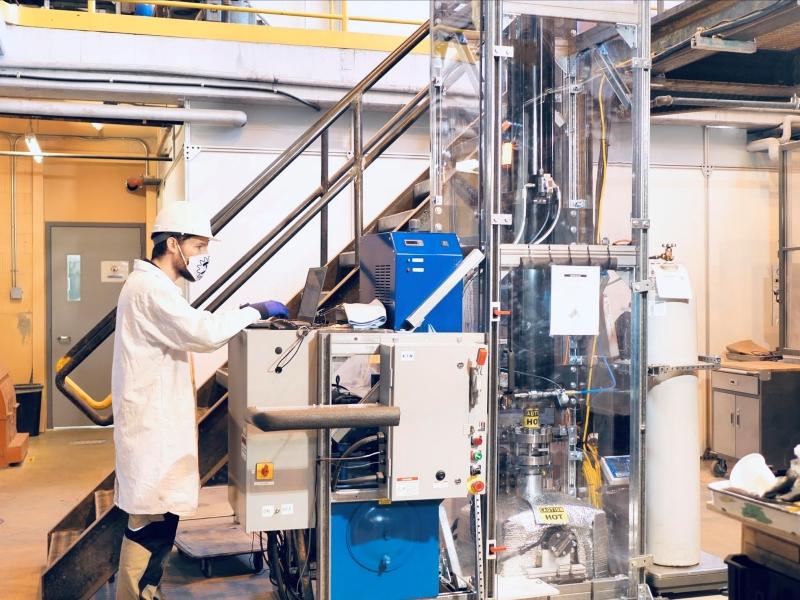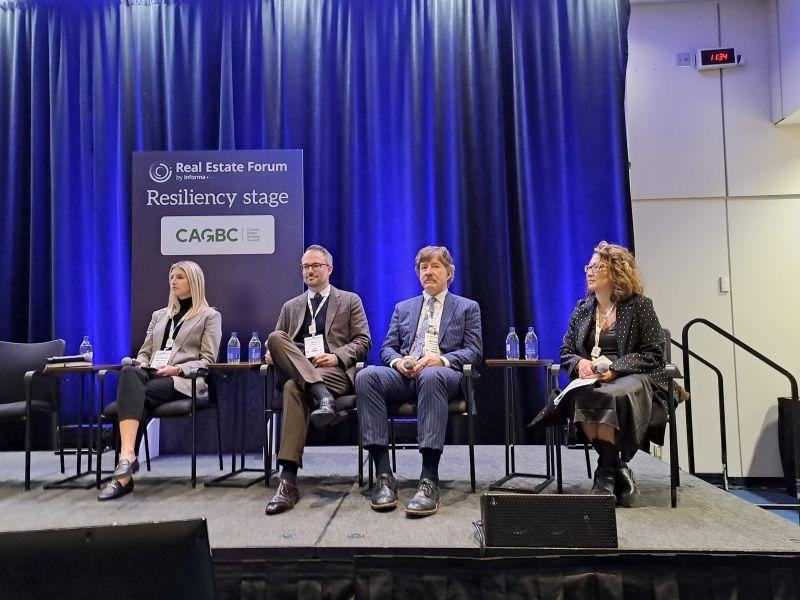 Betterfrost Technologies Inc., an Oakville, Ont.-based tech company, is pioneering an energy-efficient defrosting and defogging system it says can extend the range of electric vehicles (EVs).
Betterfrost Technologies Inc., an Oakville, Ont.-based tech company, is pioneering an energy-efficient defrosting and defogging system it says can extend the range of electric vehicles (EVs).
The company’s technology uses Pulsed Electro-Thermal De-icing (PETD) to ensure heat stays on the conductive surface through its software, minimizing energy use.
Compared to traditional HVAC defrost and defog, Betterfrost says its PETD uses 20 times less energy, which extends an EV’s range by 30 to 35 kilometres during winter, according to CEO Derrick Redding.
To develop its technology, Betterfrost will collaborate with Japanese automotive parts company DENSO, with funding from the Ontario Vehicle Innovation Network (OVIN) R&D Partnership Fund. It plans to demonstrate the fruits of the partnership at a Detroit auto show in April.
“I’ve been in automotive for 25 years and what’s really exciting to me is the type of discussions we’re having with automakers and R&D, they are considering this for architecture changes on their entire platform,” Redding told Sustainable Biz Canada in an interview. “I think it speaks to the value proposition that we’re having.”
The beginning of Betterfrost
Betterfrost was co-founded by chief technology officer Sameh Saad and now-advisor Kazi Ahmed, who have backgrounds in engineering and academia.
Saad, who also spoke to Sustainable Biz Canada, said the inspiration for Betterfrost came from Ahmed, who worked at New Hampshire-based Dartmouth College’s Ice Research Laboratory after finishing his master’s degree in materials science engineering at the university.
“The physicists noticed that ice has a very strong bonding force on surfaces,” Redding said about the principle behind PETD. “If you break that bond, you create a thin film of water that slides off very easily. So you don’t waste energy trying to melt the entire mass of ice . . . just focus your heat in a way that only reaches that interfacial layer to create that thin layer of water.”
The PETD technology was brought to Canada by Ahmed, who sought technical help to bring the idea to commercialization. EVs are prioritized because of the market need for an energy-efficient solution, according to Saad.
It can perform tasks such as de-icing, defrosting, defogging and heat shielding, while also being usable for refrigeration, and applied to other vehicles such as airplanes.
The company was founded in 2015, and currently has a tech centre and lab in Oakville with a team of 10 engineers.
Redding, who has 25 years of experience in the automotive industry with companies like Toyota and Johnson Controls, joined Betterfrost as chief executive in March 2022.
Betterfrost received an undisclosed amount of investment from Toyota Tsusho Canada in 2020.
Betterfrost’s applications for EVs and refrigeration
EVs are sensitive to drops in temperature. One study found EVs can lose up to 30 per cent of their range in freezing temperatures, so mitigating that loss can be an important feature for drivers.
To integrate Betterfrost’s solution, the company developed a microcontroller that can be added to EVs by automakers. The microcontroller contains the software that enables the pulsing on a car’s windows.
The energy efficiency of Betterfrost’s PETD extends the battery’s range by four to five kilowatt-hours on an average winter drive, according to Redding, which results in the extra driving distance.
The defrost and defog solution can also be used in electric trucks and buses. Redding said the benefits would be amplified for trucks and buses compared to consumer vehicles, as they are often parked outside and must be defrosted frequently. A bonus is the comfort of the driver, as HVAC systems blow hot, dry air on their face, causing dry eyes. Betterfrost believes it is able to bypass that problem entirely.
Outside of EVs, the technology can be used in refrigeration systems to defrost the conductive layer of evaporator coil tubes, saving up to 15 to 20 per cent on energy use, or defrost the exterior of heat exchangers used in heat pumps. Redding said he would like to take the company’s technology to the market for cold storage because of the energy intensity.
The DENSO collaboration and demonstration
In an effort to increase the energy efficiency of Betterfrost’s offering, the company collaborated with DENSO, one of the world's largest auto parts companies.
"By leveraging Betterfrost's cutting-edge technology, we expect this project to demonstrate tangible benefits in extending electric vehicle range and realizing a green future," Dave Korenchuk, director of thermal R&D at DENSO, said in a release.
To support the collaboration, OVIN will be providing $500,000, on top of $1.25 million in industry contributions.
At the WCX World Congress, an automotive technology conference in Detroit April 16-18, Betterfrost will be demonstrating a vehicle with its PETD technology and showing the results of its DENSO collaboration, Redding said.










